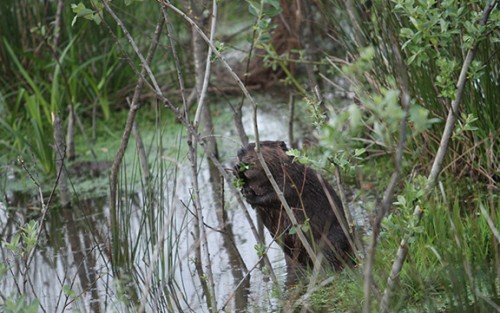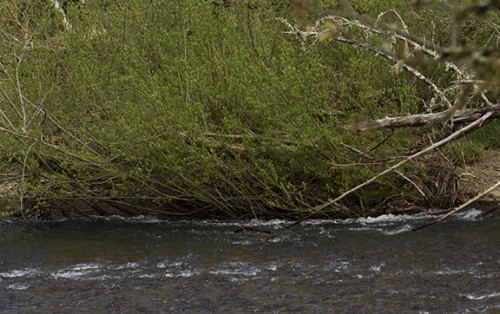Willow stakes planted in late January alongside Thompson Creek in Seaside were bursting with new catkins and green leaves by late March.
A dozen or so volunteers took advantage of the moist soil and mild weather to plant willow wands on key habitat reserves in the Seaside area this winter.
A small group led by Conservation and Stewardship Manager Amy Hutmacher collected and planted hundreds of willow stakes at our Thompson Creek and Stanley Marsh habitat reserves in late January.
Then on the last day of February, Stewardship Director Melissa Reich orchestrated a mass planting of willows at Circle Creek.
[wc_row][wc_column size=”one-half” position=”first”]
[/wc_column][wc_column size=”one-half” position=”last”]
[/wc_column][/wc_row]
Why do we love willow so much? It grows fast. It shades streams where coho salmon spawn and juvenile salmon spend their first year. It shades out invasive grasses. Its catkins provide food and nesting material for birds. And it entices beavers—the best wetland engineers on the planet—to come, eat, and build.
Here nature photographer Neal Maine shares images of a few of his favorite willows in action in North Coast wetlands.

Owners of a piece of boggy property in Cannon Beach pruned back this willow, which only encouraged it to sprout new willow shoots. The rooting hormone present in willow is so powerful, gardeners use “willow water” to jumpstart propagation of other plants.

After these willows in the same Cannon Beach bog blew down, new willows emerged from the now-horizontal trunks and began reaching for the sky. Note the scars from the rubbing of elk antlers.

On the right bank of the Necanicum River, just downstream of Klootchy Creek County Park off US 26, a willow blew down; its offspring now buttress that riverbank, slowing erosion.

This old, contorted willow is, in effect, dead. But it’s still giving life, serving as habitat for birds and harboring a robust colony of mushrooms.

A beaver gnawed down this mature willow at Thompson Creek, which only encouraged it to sprout new growth.
 For more on willows, read Mike Patterson’s recent post on his blog, North Coast Diaries.
For more on willows, read Mike Patterson’s recent post on his blog, North Coast Diaries.




Comments